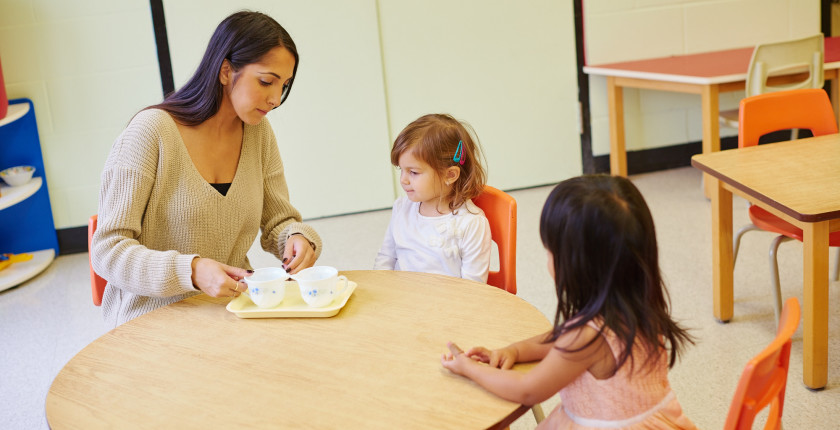Blog
Grace and Courtesy: A Guide for Casa Parents
- November 22, 2021
- Posted by: admin
- Category: Montessori Parent Bulletin

‘Grace and Courtesy’ is the title given to one of the five components of the Practical Life area in the Montessori classroom. The philosophy behind this component is that the child desires to learn proper social behaviour in order to become integrated into the culture of their native environment. As the concepts of Grace and Courtesy do not rely on logic and are not universal, they must be taught.
During the sensitive period for social behaviour, the child absorbs the customs and manners of their own specific community and these become an integral part of his or her personality. They are driven to absorb the appropriate behaviours because they are most comfortable in a setting where they know how they are expected to behave. The child wants to belong and Grace and Courtesy shows them how they may do so. The toddler is naturally self-centred because he or she is engaged in building their own personality. He or she observes the social behaviours of their environment, but it is not until the ages of 3-6 that the child usually begins to feel or know how to respond to empathy for those around them. This is the perfect time to reinforce they ways that they may be considerate of others.
Classroom manners and etiquette are a part of Grace and Courtesy. However, the scope of Grace and Courtesy in the Montessori context is greater than simply adhering to social customs. The child also has a drive to communicate and be heard and Grace and Courtesy shows how this can be done in a positive manner. Grace is the harmonious balance between mind and body while Courtesy is the harmonious balance between people. Both facets are important to the classroom. If we can help the child absorb the norms of Grace and Courtesy, we give them the power to create harmony.
The child learns by doing. This is why Grace and Courtesy is presented in an active way that involves the senses. Children are introduced to these concepts through play-acting with their peers. Daily lessons of Grace and Courtest have a tremendous positive impact on the classroom community. The children are introduced to practical courtesies such as ‘please and thank you’, how to interrupt politely and what to do if they have to sneeze or cough. Being able to perform these activities in a culturally accepted way provides them with a sense of dignity.
Works Cited
McDonnell, Janet. “Grace and Courtesy for the Primary Child: Theoretical Foundations” Grace and Courtesy: A Human Responsibility AMI/USA Conference (Oak Brook, Illinois, July 23-26, 1998) Rochester: AMI, 1999. Print.
Seldin, Tim. “Sensitive Periods” Tomorrow’s Child Magazine. Spring 2006. 5-7.
